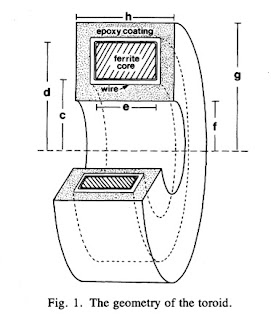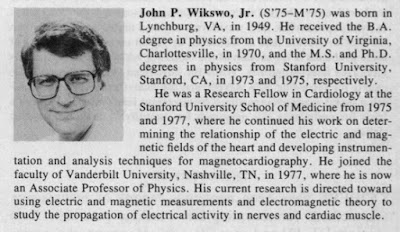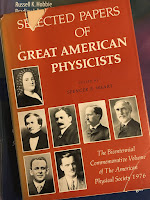 |
| The Story of the World in 100 Species, by Christopher Lloyd. |
This book is a jargon-free attempt to explain the phenomenon we call life on Earth. It traces the history of life from the dawn of evolution to the present day through the lens of one hundred living things that have changed the world. Unlike Charles Darwin’s theory published more than 150 years ago, it is not chiefly concerned with the “origin of species,” but with the influence and impacts that living things have had on the path of evolution, on each other and on our mutual environment, planet Earth.Of course, I began to wonder how many of the top hundred species Russ Hobbie and I mention in Intermediate Physics for Medicine and Biology. Lloyd lists the species in order of impact. The number 1 species is the earthworm. As Darwin understood, you would have little agriculture without worms churning the soil. The highest ranking species that was mentioned in IPMB is number 2, algae, which produces much of the oxygen in our atmosphere. According to Lloyd, algae might provide the food (ick!) and fuel we need in the future.
Number 6 is ourselves: humans. Although the species name Homo sapiens never appears in IPMB, several chapters—those dealing with medicine—discuss us. Number 8 yeast (specifically, S. cerevisiae) is not in IPMB, although it is mentioned previously in this blog. Number 15 is the fruit fly Drosophila melanogaster, which made the list primarily because it is an important model species for research. IPMB mentions D. melanogaster when discussing ion channels.
Cows are number 17; a homework problem in IPMB contains the phrase “consider a spherical cow.” The flea is number 18, and is influential primarily for spreading diseases such as the Black Death. In IPMB, we analyze how fleas survive high accelerations. Wheat reaches number 19 and is one of several grains on the list. In Chapter 11, Russ and I write: “Examples of pairs of variables that may be correlated are wheat price and rainfall, ….” I guess that wheat is in IPMB, although the appearance is fairly trivial. Like yeast, number 20 C. elegans, a type of roundworm, is never mentioned in IPMB but does appear previously in this blog because it is such a useful model. I am not sure if number 21, the oak tree, is in IPMB. My electronic pdf of the book has my email address, roth@oakland.edu, as a watermark at the bottom of every page. Oak is not in the appendix, and I am pretty sure Russ and I never mention it, but I haven’t the stamina to search the entire pdf, clicking on each page. I will assume oak does not appear.
Number 24, grass, gets a passing mention: in a homework problem about predator-prey models, we write that “rabbits eat grass…foxes eat only rabbits.” When I searched the book for number 25 ant, I found constant, quantum, implant, elephant, radiant, etc. I gave up after examining just a few pages. Let’s say no for ant. Number 28 rabbit is in that predator-prey problem. Number 32 rat is in my favorite J. B. S. Haldane quote “You can drop a mouse down a thousand-yard mine shaft; and arriving at the bottom, it gets a slight shock and walks away. A rat is killed, and man is broken, a horse splashes.” Number 33 bee is in the sentence “Bees, pigeons, and fish contain magnetic particles,” and number 38 shark is in the sentence “It is possible that the Lorentz force law allows marine sharks, skates, and rays to orient in a magnetic field.” My favorite species, number 42 dog, appears many times. I found number 44 elephant when searching for ant. I am not sure about number 46 cat (complicated, scattering, indicate, cathode, … you search the dadgum pdf!). It doesn’t matter; I am a dog person and don’t care for cats.
Number 53 apple; IPMB suggests watching Russ Hobbie in a video about the program MacDose at the website https://itunes.apple.com/us/itunes-u/photon-interactions-simulation/id448438300?mt=10. No way am I counting that; you gotta draw the line somewhere. Number 58 horse; “…horse splashes…”. Number 59 sperm whale; we mention whales several times, but don’t specify the species—I’m counting it. Number 61 chicken appears in one of my favorite homework problems: “compare the mass and metabolic requirements…of 180 people…with 12,600 chickens…” Number 65 red fox; see predator-prey problem. Number 67 tobacco; IPMB mentions it several times. Number 71 tea; I doubt it but am not sure (instead, steady, steam, ….). Number 77 HIV; see Fig. 1.2. Number 85 coffee; see footnote 7, page 258.
Altogether, IPMB includes twenty of the hundred species (algea, human, fruit fly, cow, flea, wheat, grass, rabbit, rat, bee, shark, dog, elephant, horse, whale, chicken, fox, tobacco, HIV, coffee), which is not as many as I expected. We will have to put more into the 6th edition (top candidates: number 9 influenza, number 10 penicillium, number 14 mosquito, number 26 sheep, number 35 maize aka corn).
Were any important species missing from Lloyd’s list? He includes some well-known model organisms (S. cerevisiae, D. melanogaster, C. elegans) but inexplicably leaves out the bacterium E. coli (Fig. 1.1 in IPMB). Also, I am a bioelectricity guy, so I would include Hodgkin and Huxley’s squid with its giant axon. Otherwise, I think Lloyd’s list is pretty complete.
If you want to get a unique perspective on human history, learn some biology, and better appreciate evolution, I recommend The Story of the World in 100 Species.











